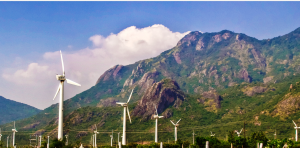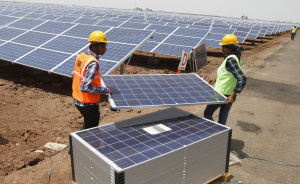Energy is an essential requirement for us to continue living the automated lives that we have now become used to. For decades, power has been produced using coal. However, it was soon realized that fuel is a finite resource and the rate at which we were using fuel, it is bound to get exhausted by 2050. Other possible infinite sources of energy were then explored.
These sources are commonly known as renewable sources, indicating that they can be renewed and are inexhaustible.
However, for decades, we have developed a system for the use of coal-generated energy. There are several factors which depend upon this system that has been already set up. The transportation system for the energy generated is already in place and spread throughout the country. An entire market revolves around the production of thermal energy.
How Countries Are Taking Initiative
India has great potential for utilizing renewable sources. Being a tropical country, we have abundant solar energy. We also have the Thar desert and Kachchh, which are barren lands with maximum potential for harnessing power from the sun. We have a massive coastline of 7200km. We also have great sources to harness wind energy in several parts of the country. In spite of this, about 70% of the country is still dependent on conventional sources of energy.

Most of the European countries have now gone more than 90% renewable. Countries like Germany and Sweden have specific days in the year when they rely entirely on energy generated by renewable energy. Nevertheless, apart from many European countries, the rest of the world is struggling to shift from conventional to renewable energy sources.
The Financial Turbulence
The main reason behind this is that the entire system which has already been set up will have to be changed to incorporate renewable energy sources.
This is likely to cause financial turbulence in the country and around the globe as every country heavily depends on its energy sector. Mining for coal is also a considerable market. Coal processing and thermal power plants also contribute significantly to the market. The shift from thermal to renewable is, therefore, a prolonged one. But it is indeed a gradual and definite change.
The equipment for renewable energy is still expensive and needs high maintenance. An example of this is when solar panels were set up in the desert regions of India, the sand particles which flowed with the air and settled on the boards caused scratches to appear on the solar panels, reducing their efficiency.
So What Was The Solution?
A simple solution to this was to cover the panels with scratch-proof glass, maintaining their ability and solving the problem.
Newer discoveries are solving the problems with the expensive and sensitive equipment making this choice more feasible. Solar panels have become considerably cheaper and require less maintenance. The mindset of people is gradually changing, too. They are becoming more accepting of these changes now. The world has a vast population and energy has become one of our basic needs.

However, it is essential to realize the impact it has on the environment as well as the finance sector. Change is never accepted immediately as people do not like to shift from a system they have become used to, to one where they have to uproot all their old system and set up a new one. It is, therefore, essential to develop pieces of equipment and machines that fit in with the old systems with only a few tweaks here and there.
Conclusion
The sheer size of the energy sector and the financial aspect of it is the reason the transition is so slow and painful. Each small change is met with several difficulties which have to be resolved before moving forward. Each change causes tumult in the market, and someone or the other is negatively affected by it.
However, it is essential to focus on the greater good and make adjustments to fit the bigger picture and accept changes from the older systems to incorporate newer ones.


gabapentin addictive